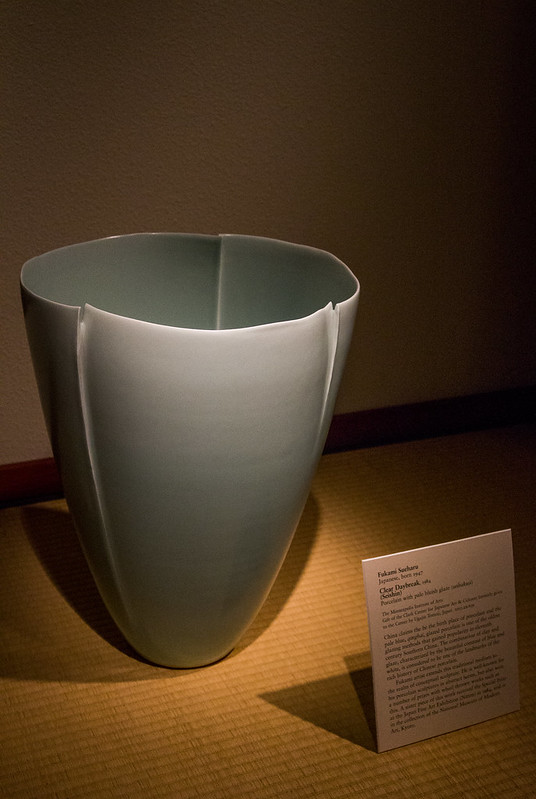I have been fortunate to have met Fukami Sueharu and one book that I treasure (and was thrilled to have him sign) was a copy of “Fukami: Purity of Form” written by Andrea Marks (and also including essays from other associates who are well-versed in the work of Fukami).
For anyone who has never seen the work of Fukami, the one thing that will amaze you is how some of his sculptures are razor thin and are absolutely beautiful.
Fukami, world renown for “his polished, razor-sharp, minimalist porcelain sculptures which are then glazed in pale bluish, is inspired by Chinese qingbai porcelains of the ten to thirteenth centuries”.

Fukami Sueharu – Clear Daybreak (Seishin) – Made of porcelain with pale bluish gaze (Seihakuji) China claims to be the birth place of porcelain and the pale blue, qingbai, glazed porcelain is one of the of the oldest glazing methods that gained popularity in eleventh century Southern China. The combination of clay and glaze, characterized by the beautiful contrast of blue and white, is considered to be one of the landmarks of the rich history of Chinese porcelain. Fukami artist extends this traditional medium to the realm of conceptual sculpture. He is well-known for his porcelain sculptures in abstract forms, but also won a number of prizes with wheel thrown works such as this. A sister piece of this work received the Special Prize at the Japan Fine Art Exhibition (Nitten) in 1984, and is the collection of the National Museum of Modern Art, Kyoto. Clark Center: Elegant Pastimes: Masterpieces of Japanese Art from the Clark Collections at the Minneapolis Institute of Arts (March 7, 2015). Photo by Dennis A. Amith
“Fukami” goes into the how Fukami became a sculptor, a conversation with Fukami and all essays are presented in English and in Japanese.
For the illustrated catalog, featuring beautiful, large photos of his sculptures. Also, it was great to see photos of Fukami working on a sculpture with captions outlining what he was doing in the appendix.
Overall, this hardcover book is an absolute treasure and if you love Fukami Sueharu’s work, “Fukami: Purity of Form” is worth owning.


